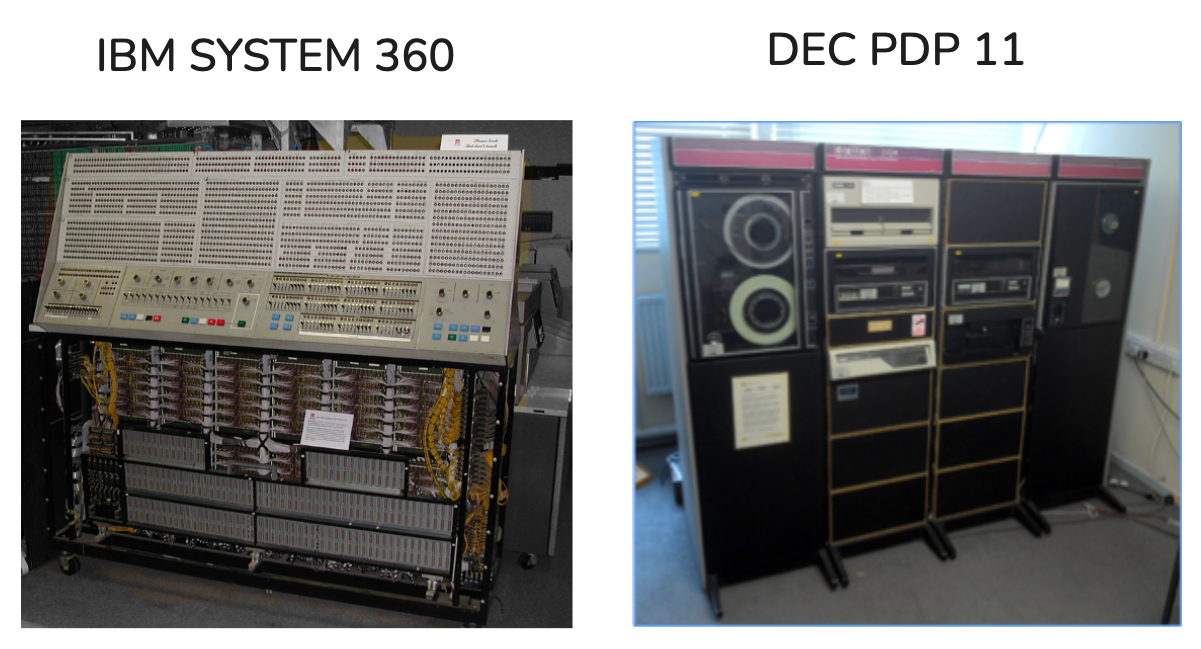The world of concurrent programming has evolved dramatically since the early days of computing. As our applications became more complex and our hardware more powerful with multiple cores, the traditional Object-Oriented Programming (OOP) paradigm began to show its limitations in handling concurrency effectively.
The Historical Context of OOP
Object-Oriented Programming didn't emerge overnight. Its roots trace back to the 1960s with Simula, which first introduced the concept of objects and classes. The paradigm was further developed in the 1970s with Smalltalk, which refined the messaging system between objects.
The real breakthrough came in the 1980s when languages like C++, Java, and Python brought OOP to mainstream programming. These languages promised to make code more modular, reusable, and easier to maintain by encapsulating data and behavior within objects.

Early mainframe computers like the IBM System 360 (1964) and DEC PDP-11 (1970) were primarily single-user, sequential processing machines. The evolution to concurrent programming began as these systems needed to handle multiple users and tasks simultaneously.
OOP's core principles seemed perfect for building complex systems:
- Encapsulation: Hiding internal implementation details
- Inheritance: Reusing and extending existing code
- Polymorphism: Writing flexible code that works with different types
- Abstraction: Simplifying complex systems through interfaces
The Rise of Concurrency Challenges
As computing evolved, so did our needs. Single-threaded applications could no longer satisfy the performance requirements of modern systems. We needed applications that could:
- Handle multiple users simultaneously
- Process large datasets efficiently
- Remain responsive while performing background tasks
- Utilize multi-core processors effectively
This is where traditional OOP began to show its age. The fundamental challenge lies in shared mutable state – when multiple threads access and modify the same data concurrently.
flowchart LR
A[Single-Threaded<br/>Sequential Processing] --> B[Multi-Threaded<br/>Shared State]
B --> C[Race Conditions<br/>Data Corruption]
C --> D[Synchronization<br/>Locks & Mutexes]
D --> E[Deadlocks<br/>Performance Issues]
E --> F[Complex Debugging<br/>Scalability Problems]
F -.->|Solution| G[Actor Model<br/>Message Passing]
style A fill:#e1f5e1
style G fill:#e3f2fd
style C fill:#ffebee
style E fill:#ffebee
style F fill:#ffebeeThe evolution of concurrency challenges: from simple sequential processing to complex multi-threaded problems, leading to the Actor Model as a solution.
The Threading Complexity Problem
Traditional thread management creates a web of complex synchronization issues:
// Traditional Java threading approach
public class BankAccount {
private double balance;
public synchronized void withdraw(double amount) {
if (balance >= amount) {
balance -= amount; // Race condition without synchronization
}
}
public synchronized void deposit(double amount) {
balance += amount;
}
}While synchronized keywords help, they introduce their own problems:
- Performance bottlenecks from thread blocking
- Deadlock risks when multiple locks are involved
- Complex debugging of race conditions
- Scalability issues as contention increases
Common Misconceptions About Concurrency
Many developers fall into these traps when approaching concurrent programming:
1. "Asynchronous = Parallel"
Asynchronous programming doesn't automatically guarantee parallelism. Async code can still run on a single thread, simply yielding control when waiting for I/O operations.
// This is asynchronous but not necessarily parallel
async function fetchData() {
const result1 = await api.getData1();
const result2 = await api.getData2(); // Still sequential!
return { result1, result2 };
}2. "Async Code is Always Faster"
Asynchronous operations aren't inherently faster – they're better at resource utilization. If you're CPU-bound rather than I/O-bound, async patterns might not provide benefits and could even introduce overhead.
3. "We Don't Need Threads Anymore"
Despite async/await patterns, threads remain fundamental to concurrent execution. Modern async runtimes still use thread pools under the hood to handle truly parallel work.
The Actor Model: A Different Approach
This brings us to the Actor Model – a paradigm that addresses these concurrency challenges by fundamentally rethinking how we structure concurrent applications.
Instead of sharing mutable state between threads, the Actor Model proposes:
- Encapsulated State: Each actor owns its state completely
- Message Passing: Actors communicate only through messages
- Isolation: No shared memory between actors
- Supervision: Built-in error handling and recovery mechanisms
In upcoming parts of this series, we'll explore:
- Part 2: The Actor Model on the JVM – The Pitfalls of Shared State
- Part 3: The Actor Model on the JVM – The Final Chapter
Why This Matters Today
Modern applications face unprecedented concurrency challenges:
- Microservices architectures requiring distributed coordination
- Real-time systems demanding low-latency responses
- IoT applications handling thousands of concurrent connections
- Financial systems requiring both performance and correctness
The Actor Model offers a proven approach to tackle these challenges, moving us away from the traditional thread-and-locks model toward a more scalable, fault-tolerant architecture.
Looking Forward
In the next article, we'll dive deep into the specific problems that arise when dealing with shared mutable state in multithreaded environments. We'll examine real-world scenarios where traditional OOP concurrent patterns break down and explore why a message-passing approach might be the solution we need.
The journey from OOP to Actor-based concurrent programming isn't just about learning new syntax – it's about adopting a fundamentally different mental model for building scalable, resilient systems.
This article is part of our comprehensive series on concurrent programming patterns. Stay tuned for Part 2, where we'll explore the specific pitfalls of shared state in detail.
